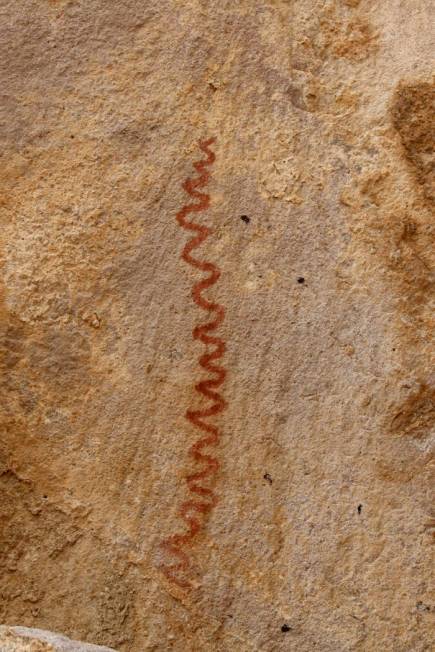Keyhole Canyon ideal for youths, short winter days

Keyhole Canyon is a great short trip for the entire family. The area is best visited in cooler months, and it’s near Las Vegas, so you can enjoy it and be home by dark, even in February.
Furthermore, this hike is suitable for just about anyone in your group, including small children, as it is 350 yards round-trip.
Located on the western edge of the Eldorado Mountains, just south of Boulder City, Keyhole Canyon is home to American Indian petroglyphs as well as a few pictographs and a lovely dryfall in the picturesque box canyon.
Be aware before setting out, though, that to get to the trailhead and parking area you’ll need to travel about 4 miles on a rough, gravel road requiring a high-clearance vehicle with good off-road tires.
The trailhead is at about 2,854 feet. The trail leads into a short box canyon, usually without water, which will treat you to a smooth dry waterfall.
Once you park, head toward the fence until you find the opening constructed for hikers. From here you will already be able to see dozens of petroglyphs, especially concentrated on the cliff walls on the left side of the canyon. You will definitely want to have binoculars to view the rock art that is located high up. Even if you were willing to risk your life climbing for a closer look, touching them with your hands would cause irreparable damage. The oils from human skin destroy them rather quickly.
Prehistoric American Indians pecked and chipped these glyphs through the dark desert varnish that covers the rock here, primarily quartz monzonite. The lighter-colored rock beneath shows through the chipped-away varnish for centuries, but some petroglyphs are so old that varnish has again begun to cover them. Abstract symbols are said to be found in greater proportion here compared with the more recognizable depictions of animals and people. Some archaeologists believe the high proportion of abstract symbols, in such a striking location, indicates Keyhole Canyon may be important to the creation beliefs of prehistoric peoples.
As you make your way into the canyon, and without using any climbing skills, check out some of the overhangs that boulders have formed and look around on the walls on the right side of the canyon. Those who are fortunate to seek them out will find a few pictographs. Much rarer than petroglyphs, these were painted on the rock and have been protected from the elements. These were painted in red ochre, a natural clay pigment. As with petroglyphs, never touch them.
On your return to the trailhead, before the fence and hikers gate, head right along the cliffs and look for a boulder that contains many cupules — hollows in the rock made by prehistoric people for various purposes. These particular cupules, it is believed, had a ceremonial role.
Never attempt driving onto the gravel access road off the highway if it has rained is threatening to. Flash flooding is a real possibility.
Deborah Wall’s book “Base Camp Las Vegas: 101 Hikes in the Southwest” ($24.95, Imbrifex) is available on Amazon. She can be reached at deborabus@aol.com.